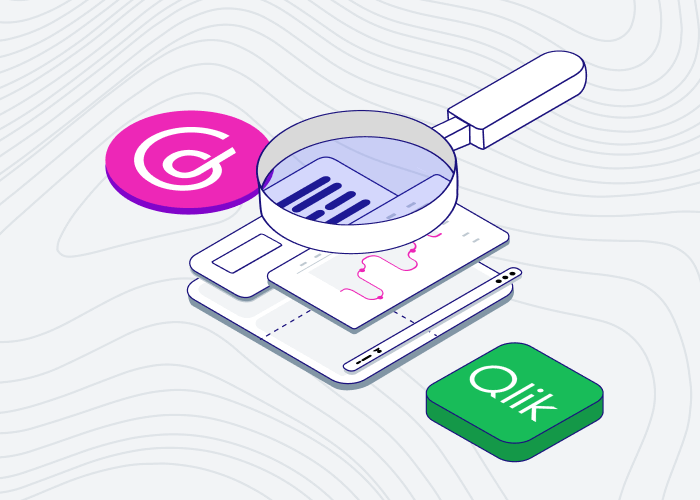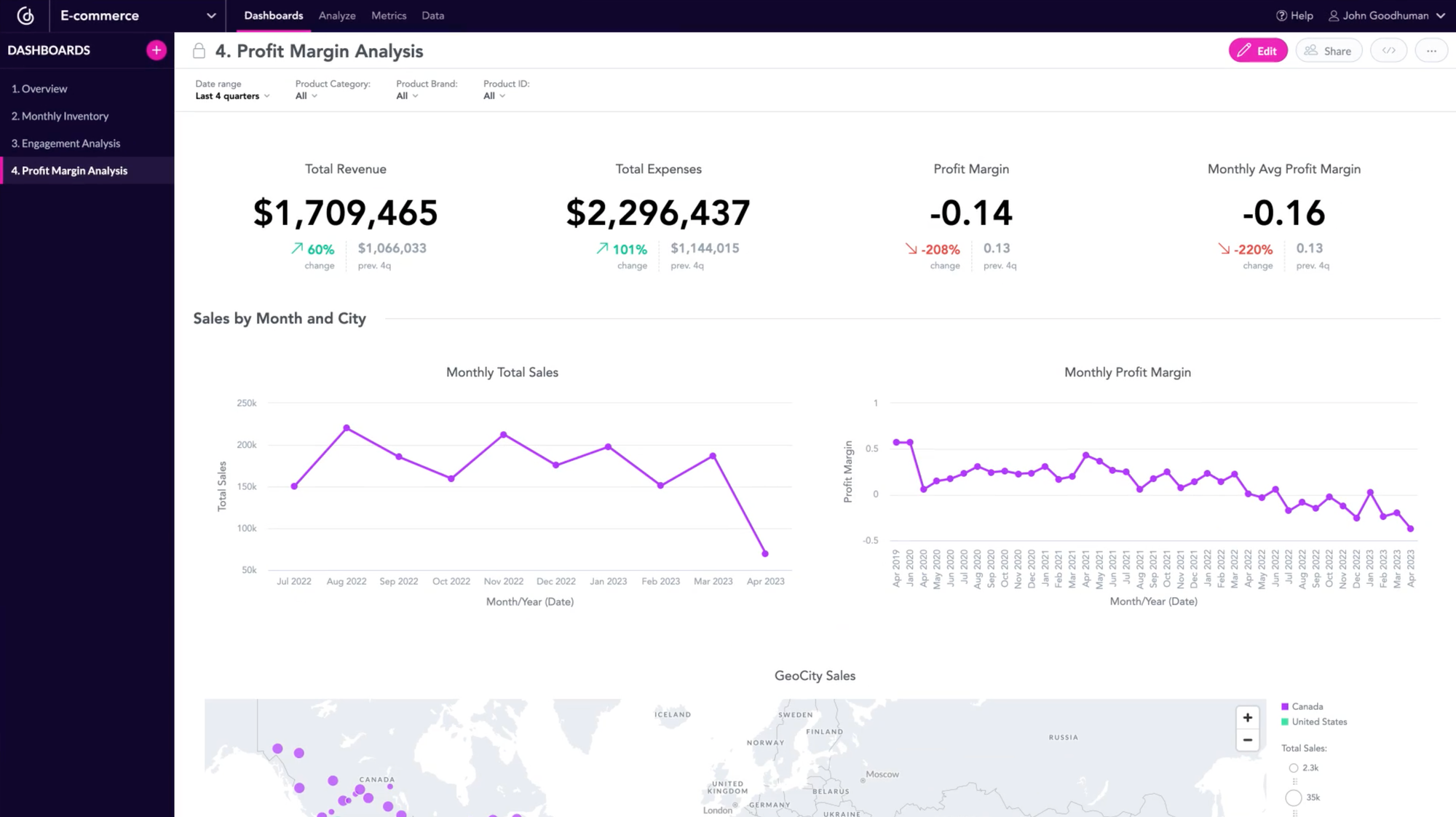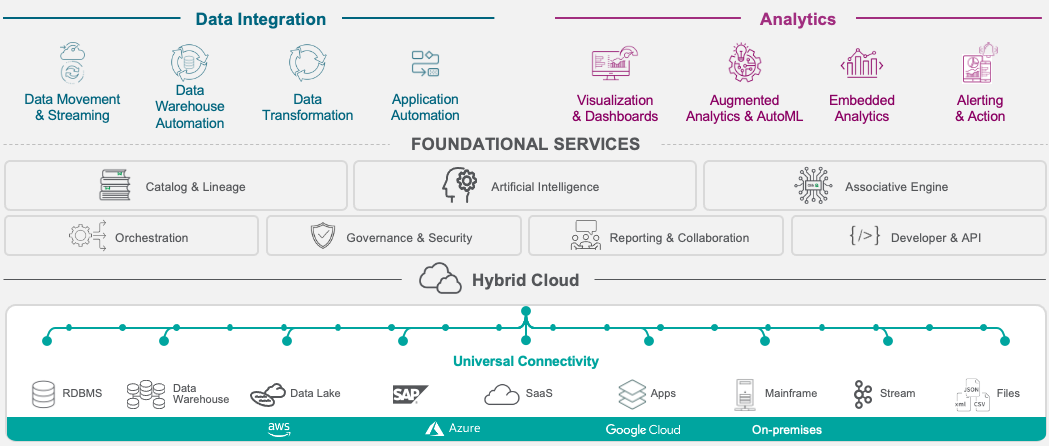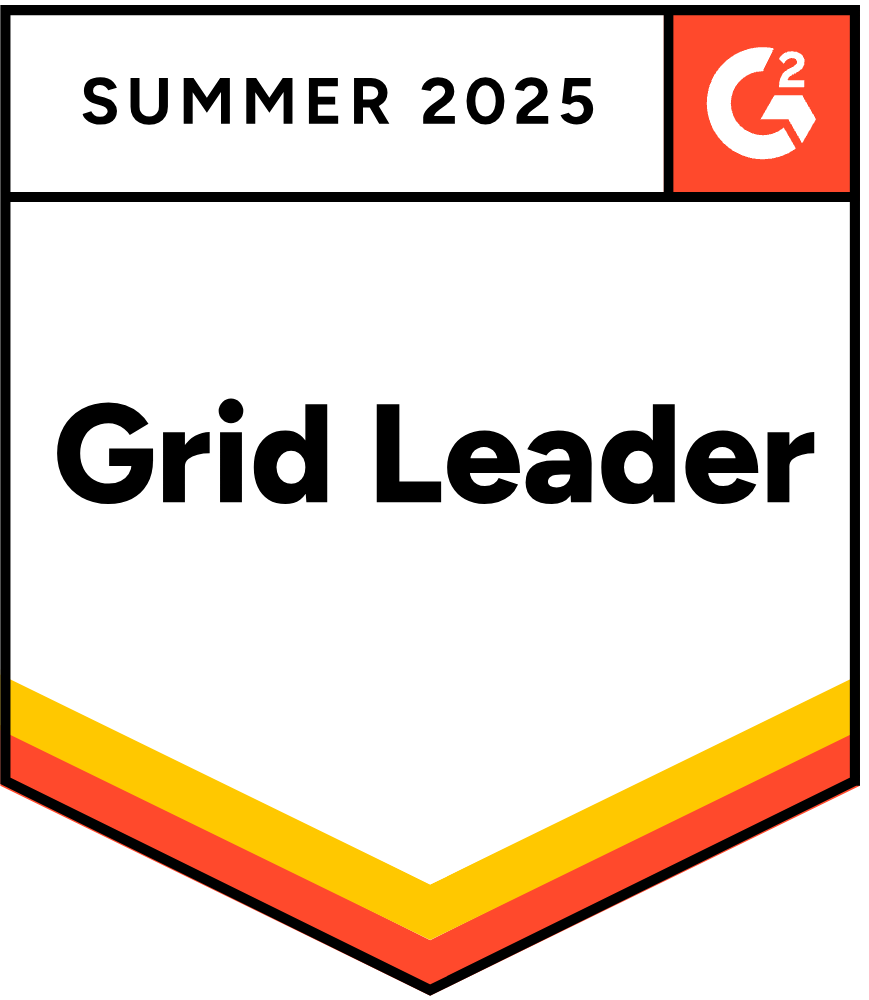
Qlik Alternative: Which Tool is Better for Your Analytics?

In the world of BI and analytics tools, excellence is defined by versatility, user-friendliness, scalability, and seamless integration capabilities. Good tools need to work for everyone, handle big data, make administrative tasks easier, and use AI-driven features to help with delivering better decisions.
When it comes to BI and analytics solutions, customer requirements may vary. For assistance in selecting the appropriate tool, you might like to read our guide on How to Evaluate BI Tools to Choose the Best One. For a general overview of the best BI and analytics providers, consider checking out Comparing the best BI tools: Select the Right Solution for Your Business.
Now, let's delve into our comparison between GoodData and another of its alternatives — Qlik.
What is GoodData?
GoodData is a cloud-based data and analytics platform that helps businesses transform data into valuable insights. It harnesses the power of automation and AI to quickly create data products and integrate analytics capabilities wherever users need them. This not only includes dashboarding and ad hoc capabilities, but also other deliverables like data feeds, SQL interfaces, API/SDK connections, embedding, alerting and notifications, and white labeling.
What makes GoodData stand out?
- Scalability and governance: GoodData centralizes metrics within the semantic layer to provide scalable analytics while continuing to ensure data integrity and consistency. Its inheritance model streamlines the provisioning of new interfaces and the central implementation of changes.
- Fully customizable with a rich user experience: GoodData offers white-labeling, flexible embedding options, actionable insights, and intuitive navigation for a seamless user experience.
- Collaboration: GoodData caters to all business personas (no-code, low-code, and full-code options). The platform offers an intuitive UI and AI features for simplicity and faster decision-making. It also supports advanced platform customization through its “as code” approach.

What is Qlik?
Qlik Cloud Analytics is a cloud-based analytics platform and an alternative to GoodData. It empowers all individuals within an organization to make informed data-driven decisions. Qlik’s focus is on providing a no-code interface, which suits analytics builders with a less technical background.
What is Qlik well-known for?
- Associative model: Qlik's association model, driven by its in-memory associative engine, enables users to explore data associations without constraints, fostering interactive exploration and deeper insights for users of all skill levels.
- Self-service tool: A user-friendly interface designed for individuals without technical expertise, enables effortless creation of dashboards, and provides access to insights for informed decision-making.
- Shareable and centralized reports: Reports are centrally shared with individuals and employee groups, allowing for organized sharing across organizational units. Templates in Qlik are pre-defined, with options for generating reports in multiple formats.

Qlik Dashboard Example (resource: Dashboard Examples)
Key differences
GoodData and Qlik are strong competitors in the cloud-based analytics market, offering similar solutions tailored to diverse business requirements. Both prioritize product enhancements driven by user feedback and BI trends, such as AI-powered analytics. Below we compare their capabilities in more detail.
Architecture
GoodData's architecture provides user-friendly visual analytics tools with embedding options, powered by GoodData's analytics engine. It utilizes Headless BI for real-time access to metrics via open APIs, ensuring data consistency. The platform is API-first, enabling accessibility and management via APIs. It also takes an "as-code approach" to analytics environment management with its suite of code-based tools: a declarative API, Python SDK, and VS Code extension.

Qlik's architecture, hosted on the Qlik Cloud platform, covers data integration and analytics. Qlik Data Integration manages multiple sources, ETL pipelines, real-time access, and cloud app integrations. Its analytics offering includes QlikView for basic visualizations, and Qlik Sense for advanced AI-assisted analytics, open APIs, rich embedding, and more.

Qlik Architecture (resource: Qlik Help Evaluation Guides)
Data integration
Both competitors allow users to connect their data sources via the connectors provided or via data source managers.
GoodData's users handle ETL externally, moving data to their data warehouse before connecting to the platform to utilize external ETL tools for broader data stack integration. Various blueprints, such as Data Pipelines as Code, streamline data integration and connectivity to the platform. Users can leverage tools like Meltano for extraction and loading, dbt for transformation, and many more, facilitating easy connection to GoodData.
Qlik's solution includes Qlik Cloud Data Integration, which offers real-time data movement from diverse sources without manual intervention. It transforms data into consumption-ready formats and automates tasks through a no-code editor. Despite its user-friendly and drag-and-drop features, data preparation could be complex — especially with multiple sources or unstructured data, which may require deeper expertise or IT support.
Data modeling
GoodData and Qlik both provide in-platform data modeling, automatically generating logical data models upon connecting to data sources. These models are integrated into the semantic layer and offer a unified view of the data organization-wide.
In GoodData, users can create and manage data models in multiple ways, including auto-generation in LDM Modeler, which is manageable via APIs and Python SDK. Users can also modify models through SQL datasets (Last Mile ETL) without affecting the data warehouse. GoodData provides the simplest way to deal with your data model by following data modeling best practices. You can check your data and data model accuracy in advance with AI capabilities like Data Profiling and Enhanced Model Validation.
In Qlik, you can modify your logical data model in multiple ways. The simplest method is through the Data Load Editor via modifying SQL queries. Alternatively, you can edit it in the Qlik Data Integration service. In Qlik Sense, the Data Manager feature allows for a quick data review and facilitates changes such as adding calculated fields, modifying attributes, making joins, and more.
Performance
GoodData uses FlexCache to optimize data processing by caching frequent computations and aggregations in dashboards. This feature, which uses Apache Arrow's columnar format, enhances performance, scalability, and cost efficiency. Users can benefit from reduced data warehousing costs, efficient data growth management, and easy scalability.
GoodData’s alternative, Qlik, offers basic analytics storage (like other analytics tools). However, the performance (or response time) relies on Qlik's associative model, which doesn't confine users to predefined hierarchies. Instead, it maps associations between data to fully explore and understand their relationships. Data is stored in an optimized binary format for better performance with large datasets. However, issues may arise, particularly during daily bulk data loading, potentially causing file multiplication.
Data visualization
The GoodData platform provides a wide range of chart types and supports custom plugins for enhanced visualization. Users can effortlessly create customizable visualizations to suit their preferences. The highly adaptable UI empowers users to build dashboards with interactive navigation and manage all elements through code.
In Qlik, users can interactively explore diverse visualizations, but if you need further customization options, they are limited and managed by extensions which require extra costs. Enhanced native customization capabilities are needed for greater flexibility, particularly when it comes to layout and design elements. Some users face challenges with design responsiveness and would like more control over layout and design features.
Scalability
As an alternative to Quik, GoodData enables scalable analytics across workspaces via its multi-tenant architecture, without hardware management. Its inheritance model based on workspace hierarchy ensures efficient deployment of changes. Utilizing a semantic layer and metrics store as a single source of truth, GoodData offers shared services across tenants, complemented by a flexible pricing model for multi-user access. User permissions are manageable both through the UI and APIs.
Qlik offers multi-tenant provisioning: each tenant has their own logically separated deployment, similar to GoodData. However, in Qlik, user (tenant) management is limited to APIs, which could potentially affect the user experience. The pricing model, which includes a dedicated capacity, poses challenges in predicting future capacity usage, potentially leading to additional charges when capacity limits are exceeded.
Embedded analytics
Both competitors enable the embedding of visualizations, dashboards, and even the entire UI into users' applications. However, there are significant differences in the methods and flexibility of the embedding offered.
GoodData's strength lies in its versatile embedding options (from the less flexible IFrame, through Web components, to the very flexible React SDK), including programmatic embedding with a fully customizable interface. These capabilities, like white labeling and “as code” management, allow customization and flexible integration, ensuring a unified user experience and efficient embedding of analytics into apps.
Qlik offers diverse embedding options, like IFrame and JavaScript libraries, but lacks highly customizable dashboards and visualizations, which can frustrate users. The complexity of Qlik's service for basic data manipulations is also a common issue, with Qlik Sense's open APIs making embedding easier compared to QlikView, which requires specific development skill
Self-service
GoodData workspaces provide user-friendly tools for exploration and dashboard creation, enabling users to independently gain insights and make informed decisions. The semantic layer ensures a consistent understanding of data across all users, including self-service users. Additionally, AI features like FlexAI Chat Assistant and Self-Service Data Science expedite the process of obtaining answers and leveraging machine learning in dashboards.
Qlik's self-service feature enables users to analyze data without IT assistance, allowing for easy dashboard creation. However, users may find the tool requires more training and coding knowledge than initially expected. Qlik also incorporates AI for dashboard exploration and predictive analysis.
AI-enhanced analytics
In GoodData, the analytics as code, open source focus, and FlexQuery foundation power the integration of AI features via large language models (LLMs), and translate technical expressions for non-technical users through a semantic layer. The platform also supports the use of public models like OpenAI ChatGPT 4.0 to enhance its AI capabilities. To try these AI features, you can sign up for the GoodData free trial.
Qlik AutoML provides AI-enhanced analytics that enables real-time access to generative content through connectors like OpenAI for in-context insights and answers. This integration enhances existing features, broadening context and driving deeper insights. It supports various use cases like generating natural language.
Pricing
GoodData offers flexible and transparent pricing to accommodate various budgets and use cases. For internal uses, the pricing is based on user adoption, with a low-cost tier available for startups. For external uses, the per-workspace model ensures predictable pricing based on the number of workspaces. There are no limitations on user access per workspace, making it ideal for B2B analytics products.
Qlik employs a capacity-based pricing model, with costs tied to data stored in Qlik Cloud Analytics. Additional charges may apply if usage exceeds the allocated capacity. Nevertheless, the inflexibility and additional expenses, particularly for features such as alerting or broad user access, pose challenges for many users.
Why choose GoodData over Qlik?
In the competitive BI and analytics market, GoodData is an excellent alternative to Qlik. It offers similar analytics capabilities but also:
- Simplicity: Allows users to interact with visualizations and dashboards, supporting data exploration through intuitive no-code UI and AI-enhanced features.
- Flexibility: A highly customizable interface with multiple embedding options and seamless integration with various tools (data tools, AI/ML, etc.).
- Productivity: Efficiency is maximized through automation, collaboration, and governance, leveraging everything as code.
- Scalability: The platform can easily adapt to growing data volumes, users, and diverse use cases.
Next steps with GoodData
Still hesitating between GoodData and Qlik? Get a free GoodData trial for some first-hand experience. Have questions or want to see real-time use cases? Request a demo for a platform walkthrough.
Find out how we stack up against our other competitors
Check out these resources to see how we compare to other GoodData alternatives:
AWS QuickSight Alternative: Choosing the Right BI Tool for Your Needs
Sisense Alternative: Elevate Your Analytics Game with Dynamic Solutions
Tableau Alternative: Addressing Challenges and Solutions for Modern Analytics
Looker Alternative: Which BI Tool Better Fits Your Business Needs?
Domo Alternative: Discover the Right BI Tool for Your Needs
Power BI Alternative: Finding the Best Fit for Your Business
*Note: The above evaluation of features is based on our best understanding of publicly available information available at the time of publishing (Mar ‘24). To understand more specific details and feature differences, readers are encouraged to perform their own research. All of the product names, logos, and brands used are for identification purposes only and remain the property of their respective owners. Use of them does not imply any affiliation with or endorsement by them.*
Continue Reading This Article
Enjoy this article as well as all of our content.
Does GoodData look like the better fit?
Get a demo now and see for yourself. It’s commitment-free.











